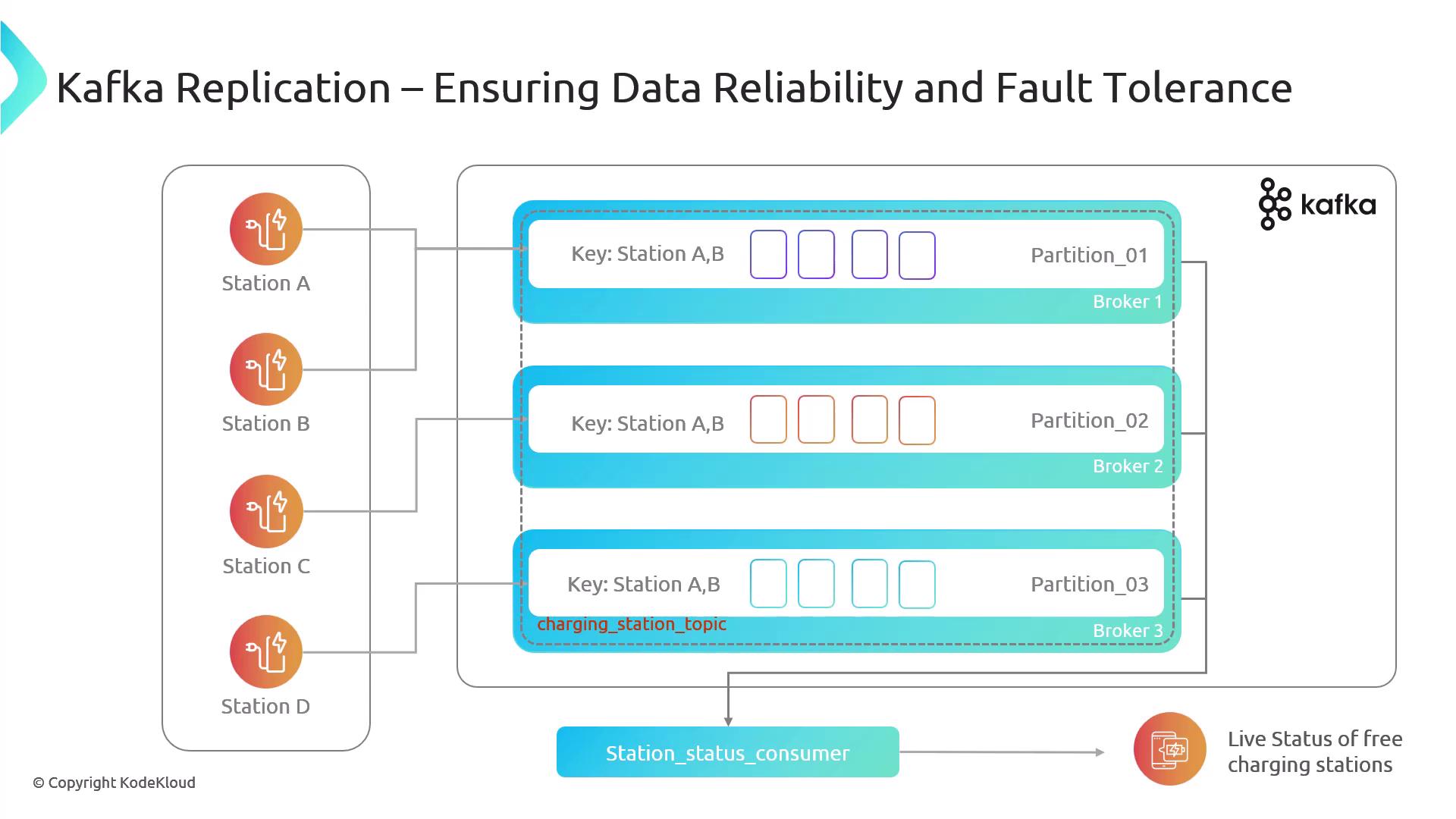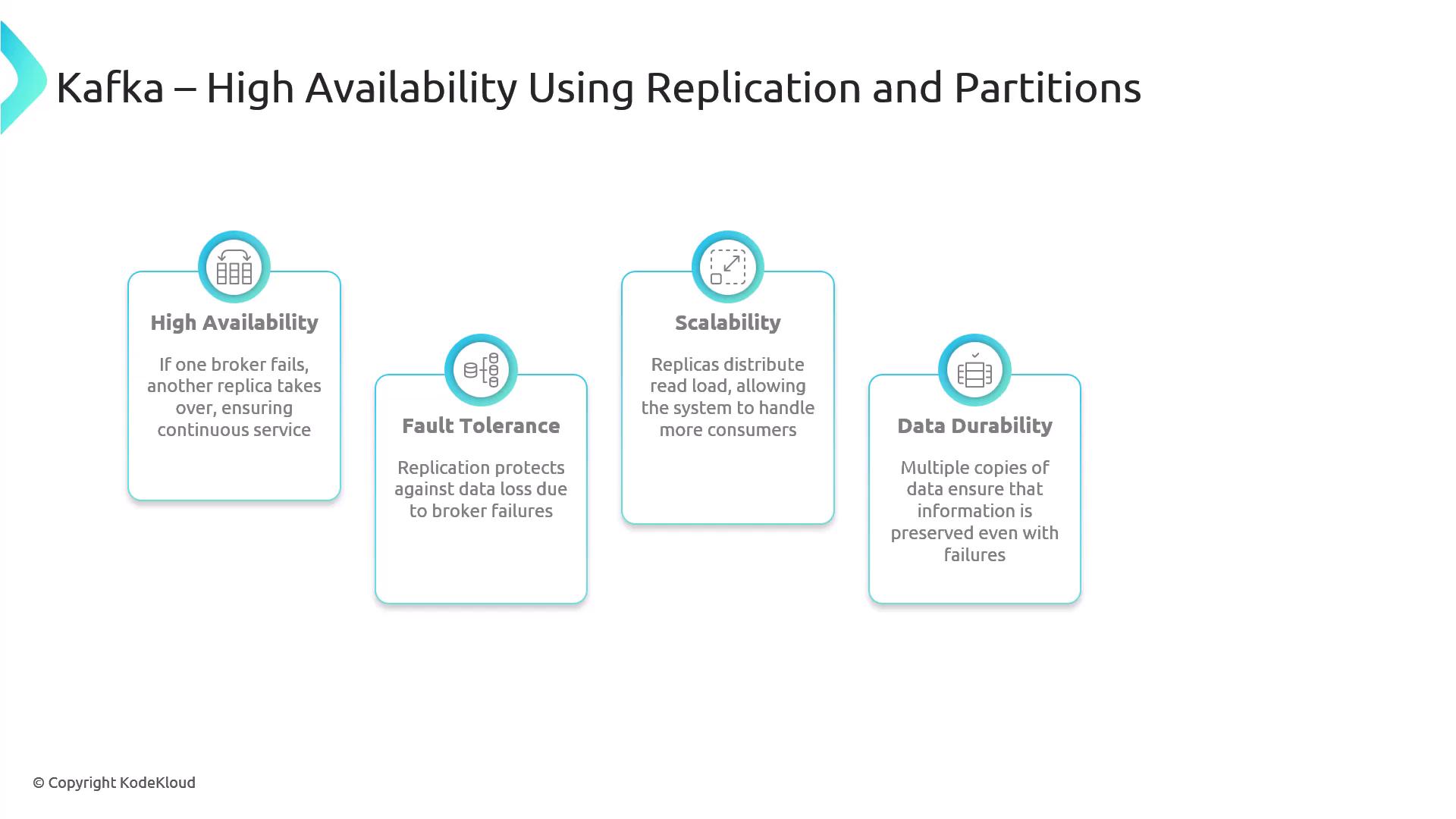Event Streaming with Kafka
Building Blocks of Kafka
Kafka Replication Ensuring Data Reliability and Fault Tolerance
Welcome back! In the previous lesson, we explored how partitions enable high availability in Apache Kafka. Now, we’ll dive into replication, Kafka’s key mechanism for data durability and fault tolerance.
Example: EV Charging Network
Consider an EV charging network where each charging station publishes events—status updates, metrics, and more—to two topics:
charging-station-topicstation-metrics-topic
Your monitoring dashboards consume from station-metrics-topic to display live station status.
Note
In this example, we assume three brokers (broker1, broker2, broker3) and three partitions per topic.
Topic Creation Example
bin/kafka-topics.sh --create \
--topic charging-station-topic \
--partitions 3 \
--replication-factor 1 \
--bootstrap-server broker1:9092
Initially, if the replication factor is 1, each partition only exists on a single broker.
Imagine broker2 fails. The partition it hosts becomes unavailable, and dashboards go dark.

Warning
Without replication, any single broker failure leads to data unavailability for the partitions it hosts.
Why Replication Matters
Replication copies each partition across multiple brokers. This ensures:
| Benefit | Description |
|---|---|
| High Availability | On broker failure, an in-sync replica is promoted to leader automatically. |
| Fault Tolerance | Multiple copies prevent data loss if a broker crashes or hardware fails. |
| Scalability | Consumers can read from replicas, distributing the load and improving read throughput. |
| Data Durability | Messages are only acknowledged to producers once written to all in-sync replicas. |
| Increased Throughput | Parallel reads and writes across replicas boost overall system throughput. |

Replication in Action
Let’s update our topic to use a replication factor of 3:
bin/kafka-topics.sh --alter \
--topic charging-station-topic \
--replication-factor 3 \
--bootstrap-server broker1:9092
For partition 1, Kafka will assign:
- Leader on
broker1 - Followers on
broker2andbroker3
Broker Failure (Non-Leader):
Ifbroker3goes offline, the partition continues serving reads/writes from the leader and the remaining in-sync follower. Kafka will automatically replicate to restore the desired replication factor.Leader Failure:
Ifbroker1(leader) fails, one of the in-sync followers (e.g.,broker2) is elected leader. Producers and consumers transparently reconnect, minimizing downtime.
Conclusion
By combining partitioning with replication, Apache Kafka delivers a robust, fault-tolerant streaming platform that guarantees data reliability and high availability. Stay tuned for more Kafka deep dives!
References
Watch Video
Watch video content